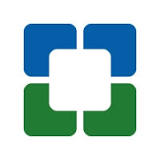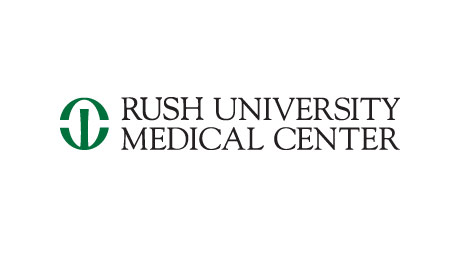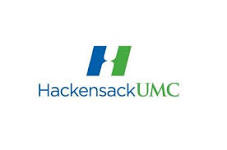Safety and Tolerability Study of EG-1962 in Aneurysmal Subarachnoid Hemorrhage
| Status: | Completed |
|---|---|
| Conditions: | Cardiology, Neurology |
| Therapuetic Areas: | Cardiology / Vascular Diseases, Neurology |
| Healthy: | No |
| Age Range: | 18 - 75 |
| Updated: | 2/7/2018 |
| Start Date: | September 2013 |
| End Date: | January 2016 |
Nimodipine Microparticles to Enhance Recovery While Reducing TOxicity After subarachNoid Hemorrhage: Phase I/IIa Multicenter, Controlled, Randomized, Open Label, Dose Escalation, Safety, Tolerability, and Pharmacokinectic Study Comparing EG-1962 and Nimodipine in Patients With Aneurysmal Subarachnoid Hemorrhage
Phase 1/2a Multicenter, Controlled, Randomized, Open Label, Dose Escalation, Safety,
Tolerability, and Pharmacokinetic Study Comparing EG-1962 and Nimodipine in Patients with
Aneurysmal Subarachnoid Hemorrhage
Tolerability, and Pharmacokinetic Study Comparing EG-1962 and Nimodipine in Patients with
Aneurysmal Subarachnoid Hemorrhage
This is a Phase 1/2a multicenter, controlled, open label, and randomized, study.
Part 1 of the study is a single dose escalation period to determine the MTD of EG-1962.
During this period, a maximum of 6 dose level cohorts with up to 12 patients per cohort will
be enrolled. In each cohort, patients will be randomly assigned in a ratio of 3:1 to receive
either intraventricular EG 1962 or enteral nimodipine, respectively. The first cohort will
receive 100 mg EG 1962. Upon completion of the dose escalation period, a safe and tolerable
dose will be selected for further study.
Part 2 of the study is a treatment period to assess the safety and tolerability of the
selected dose of EG-1962.
The safety and tolerability of a single intraventricular dose of EG 1962 will be compared to
enteral nimodipine (60 mg given every 4 hours orally or via nasogastric or gastrostomy tube)
for 21 days.
Part 1 of the study is a single dose escalation period to determine the MTD of EG-1962.
During this period, a maximum of 6 dose level cohorts with up to 12 patients per cohort will
be enrolled. In each cohort, patients will be randomly assigned in a ratio of 3:1 to receive
either intraventricular EG 1962 or enteral nimodipine, respectively. The first cohort will
receive 100 mg EG 1962. Upon completion of the dose escalation period, a safe and tolerable
dose will be selected for further study.
Part 2 of the study is a treatment period to assess the safety and tolerability of the
selected dose of EG-1962.
The safety and tolerability of a single intraventricular dose of EG 1962 will be compared to
enteral nimodipine (60 mg given every 4 hours orally or via nasogastric or gastrostomy tube)
for 21 days.
Inclusion Criteria:
- Male or female between the ages of 18 to 75 years, inclusive;
- WFNS Grade 2, 3, or 4 assessed after treatment of the aneurysm but prior to
administration of EG-1962;
- Ruptured saccular aneurysm confirmed by angiography (catheter or CTA) and treated by
neurosurgical clipping or endovascular coiling;
- Subarachnoid hemorrhage on baseline CT scan that is diffuse (clot present in both
hemispheres) thick (>4 mm) or thin, or local thick;
- External ventricular drain (EVD) in place;
- The patient is able to receive EG-1962 within 60 hours of the onset of subarachnoid
hemorrhage (SAH). Onset of SAH is defined as the time the patient experiences the
first symptom of SAH (e.g., severe headache or loss of consciousness reported either
by patient or by a witness). If found unconscious, the onset of SAH is defined as the
last time the patient was seen at baseline neurological state;
- Weight >45 kg;
- Hemodynamically stable after resuscitation with systolic blood pressure (SBP) ≥90 mm
Hg without the use of inotropic agents;
- Signed informed consent from the patient or the patient's legal representative after
the completion of aneurysm repair and after all study criteria are confirmed; and
- Female patients of child bearing potential must have negative pregnancy test . Male
patients must agree to use adequate birth control during the study and up to 1 month
after the discontinuation of the study drug treatment.
Exclusion Criteria:
- Subarachnoid hemorrhage due to causes other than a saccular aneurysm (e.g., trauma or
rupture of fusiform or infective aneurysm);
- WFNS Grade 1 or 5 assessed after completion of the aneurysm repair but prior to
administration of EG-1962;
- Increased intracranial pressure >30 mm Hg in sedated patients lasting >4 hours anytime
since admission;
- Intraventricular or intracerebral hemorrhage in absence of SAH or with only local,
thin SAH;
- Angiographic vasospasm prior to aneurysm repair procedure, as documented by catheter
angiogram or CT angiogram;
- Major complication during aneurysm repair such as, but not limited to, massive
intraoperative hemorrhage, brain swelling, arterial occlusion, or inability to secure
the ruptured aneurysm;
- Aneurysm repair requiring flow diverting stent or stent-assisted coiling and dual
antiplatelet therapy;
- Hemodynamically unstable prior to administration of study drug (i.e., SBP <90 mm Hg,
requiring >6 L colloid, or crystalloid fluid resuscitation;
- Cardiopulmonary resuscitation was required following SAH;
- Female patients with positive pregnancy test (blood or urine) at screening;
- History within the past 6 months and/or physical finding on admission of decompensated
heart failure (New York Heart Association Class III and IV or heart failure requiring
hospitalization);
- Acute myocardial infarction within 3 months prior to the administration of the study
drug;
- Symptoms or electrocardiogram (ECG)-based signs of acute myocardial infarction or
unstable angina pectoris on admission;
- Electrocardiogram evidence and/or physical findings compatible with second or third
degree heart block or of cardiac arrhythmia associated with hemodynamic instability;
- Echocardiogram, if performed as part of standard-of-care before treatment, revealing a
left ventricular ejection fraction <40%;
- Severe or unstable concomitant condition or disease (e.g., known significant
neurologic deficit, cancer, hematologic, or coronary disease), or chronic condition
(e.g., psychiatric disorder), that, in the opinion of the Investigator, may increase
the risk associated with study participation or study drug administration, or may
interfere with the interpretation of study results;
- Patients who have received an investigational product or participated in another
interventional clinical study within 30 days prior to randomization. Patients
participating in a non-interventional study that has no bearing on assessment of
EG-1962 or enteral nimodipine can be enrolled per guidelines of the local
Institutional Review Board (IRB) / independent Ethics Committee (IEC).
- Kidney disease as defined by plasma creatinine ≥2.5 mg/dl (221 μmol/l); liver disease
as defined by total bilirubin >3 mg/dl (51.3 μmol/l); and/or known diagnosis or
clinical suspicion of liver cirrhosis; or Known hypersensitivity to nimodipine or
other dihydropyridine calcium channel antagonists, poly-D, L-lactide-co-glycolide
(PLGA), or hyaluronic acid.
We found this trial at
17
sites
Cleveland Clinic Foundation The Cleveland Clinic (formally known as The Cleveland Clinic Foundation) is a...
Click here to add this to my saved trials
Columbia University In 1897, the university moved from Forty-ninth Street and Madison Avenue, where it...
Click here to add this to my saved trials
Mount Sinai Med Ctr Founded in 1852, The Mount Sinai Hospital is a 1,171-bed, tertiary-care...
Click here to add this to my saved trials
3181 Southwest Sam Jackson Park Road
Portland, Oregon 97239
Portland, Oregon 97239
503 494-8311

Oregon Health and Science University In 1887, the inaugural class of the University of Oregon...
Click here to add this to my saved trials
University of New Mexico Founded in 1889 as New Mexico’s flagship institution, the University of...
Click here to add this to my saved trials
Click here to add this to my saved trials
Click here to add this to my saved trials
Click here to add this to my saved trials
Rush University Medical Center Rush University Medical Center encompasses a 664-bed hospital serving adults and...
Click here to add this to my saved trials
Click here to add this to my saved trials
Duke Univ Med Ctr As a world-class academic and health care system, Duke Medicine strives...
Click here to add this to my saved trials
Hackensack University Medical Center Hackensack University Medical Center, part of the Hackensack University Health Network,...
Click here to add this to my saved trials
Click here to add this to my saved trials
Vanderbilt University Vanderbilt offers undergraduate programs in the liberal arts and sciences, engineering, music, education...
Click here to add this to my saved trials
Click here to add this to my saved trials
Click here to add this to my saved trials
Click here to add this to my saved trials







